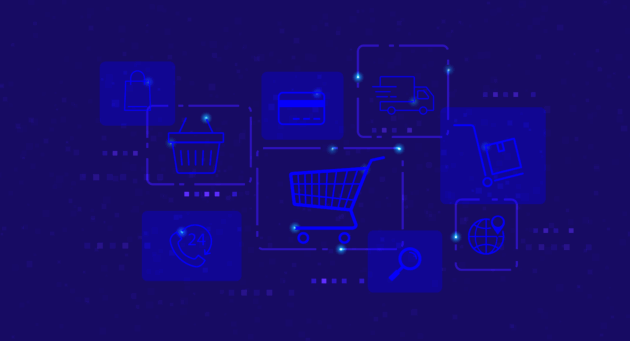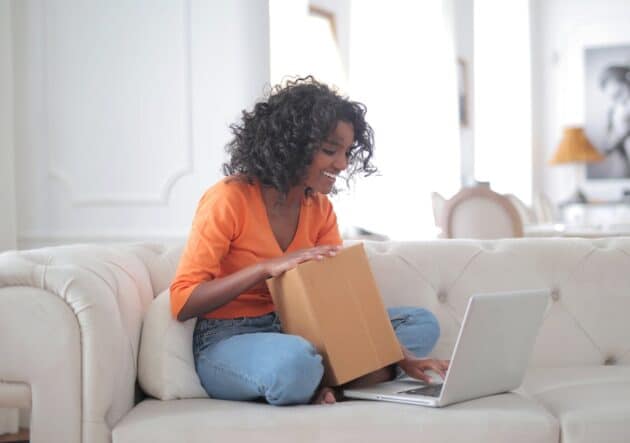There’s an entire world, invisible to the naked eye, where consumers are moving targets crossing virtual fences.
Geo-targeting on desktop was revolutionary: Suddenly internet ads were at least relevant based on your location. Now, with GPS and Bluetooth capabilities on smartphones, retailers are fine-tuning their omnichannel strategies to reach consumers in relevant locations beyond desktop, attempting to do so without being too Big-Brother-esque. Here are four ways retailers are utilizing geo-targeting technology to better reach consumers:
- Locating moving targets.
Accessing location-based services on your smartphone, advertisers can gather where you spend your time. The trick, of course, is convincing consumers to turnover their whereabouts.
Let’s say a chain of local pizza shops (the ones you pop into every now and then for their killer Margherita pies) decides to offer special promotions to encourage customers to pay with a particular payment app, which enables geolocation services. One day, as you’re strolling down a street in your neighborhood, a nearby location can entice your sudden craving for pepperoni back into the store by pushing a geo-based special offer or deal.
Consumers are still wary about sharing their coordinates. However, many will happily lose a little privacy if it means experiencing a personalized deal through the ease of mobile payment.
- Building geo-fences.
It’s Saturday, you’re in a shopping mall, and you step into a shoe store. A few seconds later, you receive a coupon notification from an app on your smartphone: 20% off all footwear at the competitor’s store across the corridor.
That shoe outlet set up a geo-fence, a virtual GPS boundary around their competition. This aggressive approach to geo-fencing is known as “geo-conquesting” — a tactic often deployed around competitors to encourage shoppers to travel a little further for discounts or deals.
Geo-fences, and geo-location in general, can be used in less cut-throat ways, of course. If you’re strolling down the street and you encounter a brand that partners with that favorite pizza shop of yours (like an artisanal ice cream parlor), you might get a push notification that asks, “Why not treat yourself?” And really, why not?
- Setting up beacons.
Apps are becoming increasingly adept at helping consumers find items in real life. Retailers can even set up “beacons” to lead consumers to the exact aisle of the item they’re looking for.
Geo-fences are good for targeting app users in large areas, but beacons are more precise, utilizing bluetooth to target push notifications within micro-locations.
Using beacons, brick-and-mortar retailers can greet app-carrying customers with deals and recommendations at the door. Beauty retailer Sephora uses beacon technology to recognize when app users are in a store, serving up an in-store map, the customer’s online shopping cart and wish list, as well as current promotions.
- Leveraging storefronts as showrooms.
Of course, some of those Sephora shoppers might be in the store just to look around, checking out makeup they might purchase later online. In a world where online purchases are increasingly outperforming in-store sales, retailers often have a tough time determining the cost-effectiveness of maintaining a brick-and-mortar presence. Today more than ever, consumers treat physical stores as showrooms — a place where they can test out tangible products to make more informed buys online.
With geo-targeting, a retailer can connect the dots between store visit and online sale by observing when a customer browses items in a physical store, then later purchases that item through an app or browser, to truly determine whether or not that brick-and-mortar presence is worthwhile.
- Avoiding geo-abuse.
It’s easy to imagine all sorts of scenarios where notifications based on your location could be invasive, insensitive, or kind of creepy. If you’re in a mad rush to get to a meeting and you’re receiving notifications from retailers left and right, you might be downright annoyed. On the other hand, if you’re caught in a thunderstorm without any rain gear and a nearby retailer serves up an umbrella promotion, you might be grateful.
Using social media, user history, and even things like the time of day and weather, retailers can custom-tailor their geo-marketing approach. As brands become more omnichannel savvy, look for them to reach consumers at the right place and the right time with just the right balance of sensitivity and gumption.
Want more? Check out our interactive eBook, The Smart Marketer’s Guide to Omnichannel.















